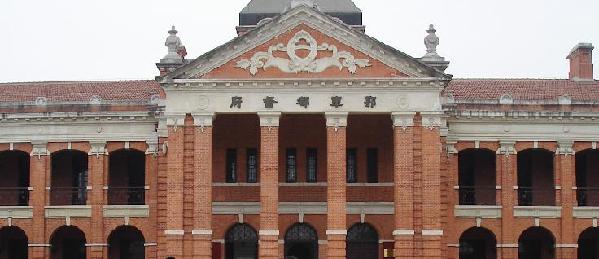Gone the 1911 Revolution sites with urbanization
 0 Comment(s)
0 Comment(s) Print
Print E-mail
Xinhua, May 9, 2011
E-mail
Xinhua, May 9, 2011
This year marks the 100th anniversary of China's epoch-making 1911 Revolution, or Xinhai Revolution. Though celebrations are being held at home and abroad in the centenary's honor, historical and cultural experts worry over urbanization's role in the disappearance of historical sites associated with the revolution.
 |
|
Disappearance of 1911 Revolution sites arouses concern |
Zhang Shaozu, a historian and cultural scholar from northern China's port city of Tianjin, has spent decades investigating and researching revolution-era historical sites.
Over the past decade, only four sites associated with the revolution in Tianjin have been well-preserved, Zhang said Friday.
Meanwhile, seven other sites have completely disappeared due to urban renewal, he said.
The 1911 Revolution ended the imperial rule of the Qing Dynasty (1644-1911) and gave birth to Asia's first republic. Sun Yat-sen, the leader of the revolution, is regarded as the forerunner of China's democratic revolution.
"Tianjin played an important role in the 1911 revolution. Because it's just 120 kilometers from Beijing, the city was chosen as the hub of the constitutional movement and revolutionary activities in northern China," said Zhang.
The constitutional movement of the late Qing Dynasty, which proposed to summon a parliament and issue the state's political power to the upper national bourgeoisie, was one of the most important political reform movements of the early 20th century.
To benefit from its advantageous location and flourishing economy, Tianjin had become home to nine national concessions by the late 19th century. More than 200 celebrities and historical figures had inhabited or visited Tianjin in the history of modern China.
"Some influential revolutionary activities, such as the Beijing Uprising, were plotted in Tianjin," said Zhang. "After the 'Preparatory Council for Constitutionalism' in 1906, Tianjin became the center of the United League of China, a nationwide revolutionary society."
"During the Xinhai Revolution, female teachers and students participated in some uprisings. Disguising themselves as pregnant women, they secretly sent ammunition to the frontline," Zhang said.
Based on his research, 12 out Tianjin's 16 historical Xinhai Revolution sites still existed when the People's Republic of China was established in 1949. As of 2001, 11 of them still remained.
In the ten years since then, however, only four have continued to be well-preserved, including the Guangdong Guild Hall, Tianjin Hauptbahnhof (now Tianjin North Railway Station), Hebei Park (now Zhongshan Park) and a school for women used during the waning years of the Qing Dynasty.
"Since the other seven sites were considered less famous and precious, they were destroyed in the past decade's process of urbanization," said Zhang.Bringing old cities into modernity often presents city planners and officials with a dilemma about protecting the old while building up the new.
He Desai, a local historian, said that historical sites in China need to be well preserved and that demolition is usually blamed for these sites' being destroyed or disappearing.
Luo Shuwei, a member of the Society of Chinese History, said that Tianjin is a place for people in modern China to have a taste of western culture and historical stories. They can tour sites with unique architectural features and historical value.
In 2005, Tianjin issued a local regulation for the preservation of historical sites. In the following five years, the city placed 746 historical buildings under legal protection.
"Historic legacies can not be duplicated. An ideal solution is to protect whole blocks containing clusters of old buildings, and any change to them must be prudent," said Xu Subin, a professor with the School of Architecture of Tianjin University.
"Protecting the 1911 Revolution sites means a lot for both Chinese history and the younger generation," said Zhang Shaozu. "I hope the four sites can last until we celebrate the 150th anniversary of the revolution."






Go to Forum >>0 Comment(s)